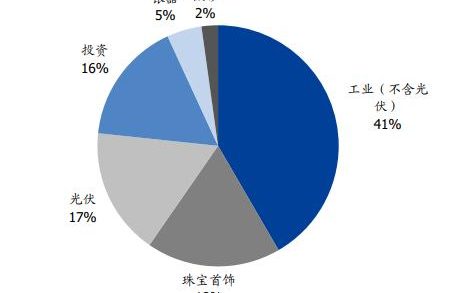1. Industry Risk Analysis
(1) Policy Risk
During the policy – making period, the vague industry standards may lead to repeated adjustments of technical routes, increasing R & D costs. During the implementation period, the differences in local environmental protection law enforcement and tax incentives force enterprises to prepare multiple sets of compliance plans. In the policy evaluation period, if the problem of over – capacity is over – interpreted, regulatory measures such as production and loan restrictions may be triggered. Moreover, the changes in international trade policies, including restrictions on raw material imports and export technical barriers, will directly impact the stability of the supply chain.
(2) Economic Risk
Under the fluctuation of the economic cycle, the current brewing equipment industry is facing double squeezes from the demand side and the cost side. Weak consumption has led to a decrease in the expansion willingness of small and medium – sized wineries, an extension of the equipment update cycle, and some customers have turned to the second – hand equipment market, diverting the demand. The prices of bulk commodities fluctuate sharply due to the cycle, and the cost transmission of core materials such as stainless steel and electronic components lags significantly, squeezing the gross profit margin of equipment manufacturing. During the credit crunch period, small and medium – sized enterprises face financing constraints. The payment collection cycle of the equipment installment payment model is lengthened, and coupled with the extension of customer payment terms, it increases the cash – flow pressure on enterprises. In addition, there is a gap between the previous capacity expansion in the industry and the economic downturn. The overstock of mid – and low – end equipment may lead to price slashing. Meanwhile, the demand for technological iteration of intelligent brewing equipment conflicts with the capital winter in terms of investment. Start – up enterprises are prone to fall into the mismatch risk between “heavy – asset R & D investment” and “light – weight market acceptance”.
(3) Social Risk
The inter – generational consumption differences have intensified the risk of demand断层. Generation Z’s pursuit of intelligent and personalized brewing experiences forces equipment upgrades. Small and medium – sized manufacturers are caught in the contradiction between high R & D investment and profit margins. The enhanced environmental awareness of the millennial group promotes the improvement of green production standards, but the slow low – carbon transformation of the traditional equipment supply chain may lead to a sharp increase in compliance costs. The positive impact of the silver economy on the expansion of low – alcohol wine consumption is offset by the overly complex operation of equipment, increasing the market education cost. Young consumers are keen on craft beer culture but lack the willingness for long – term equipment investment. The industry faces the contradiction of customer stickiness between the “experience economy” and the “durable consumer goods” attributes.
(4) Legal Risk
In terms of environmental control, the brewing equipment industry faces strict compliance risks regarding production qualifications and safety standards. If entrepreneurs fail to obtain the “Industrial Product Production License” or the equipment safety standards do not meet the requirements of GB27698, they will face production suspension and rectification. In risk assessment, equipment quality defects leading to winery production accidents will trigger high – value product liability compensation. In the control activity link, non – standard terms in purchase and sales contracts are likely to cause intellectual property disputes, especially those related to infringement of brewing process patents. At the information communication level, false disclosure of environmental protection and energy consumption data may violate the “Cleaner Production Promotion Law” and result in a fine of 5% of the annual income. In terms of monitoring, the frequency of surprise inspections by the State Administration for Market Regulation has increased. The penalty amount for cases of false energy – efficiency labeling investigated last year exceeded 15% of the industry’s average profit.
2. Entrepreneurship Guide
(1) Suggestions on Entrepreneurial Opportunities
Currently, entrepreneurial opportunities in the brewing equipment industry focus on the booming demand in the craft beer and specialty fruit wine markets. Entrepreneurs can develop modular, intelligent small – scale equipment (suitable for a production capacity of 500 – 2000 liters) equipped with the Internet of Things to monitor fermentation parameters in real – time. To meet the upgrading needs of county – level wineries, provide energy – saving transformation of old equipment (a heat recovery system can save more than 30% of electricity) and intelligent temperature – control modules for fermentation tanks. Expand equipment rental services (the monthly rental model reduces the initial investment for customers), and simultaneously build a formula database platform (access to more than 200 sets of liquor process parameters) to form a closed – loop service of equipment + technology. The key is to break into the specialty fruit wine production areas in the southwest and the craft beer workshop clusters in the Yangtze River Delta.
(2) Suggestions on Entrepreneurial Resources
Focus on regional industrial clusters to establish a flexible supply – chain network. Prioritize cooperation with small and medium – sized metal processing plants and intelligent control system suppliers to reduce equipment customization costs through modular production. Collaborate with university fermentation engineering laboratories and craft beer workshops to build technology verification scenarios, and obtain process data through the equipment rental sharing model. Deeply bind with the environmental protection supporting policies of local liquor industrial parks to exchange shared resources for wastewater treatment and energy – recycling systems. Use the industrial Internet platform to carry out real – time equipment monitoring services, and use the accumulated production data to connect with raw material centralized procurement channels.
(3) Suggestions on Entrepreneurial Teams
Entrepreneurs in the brewing equipment industry should give priority to building a dual – core team for technology R & D and channel operation. At least, it should include mechanical automation engineers (familiar with the integration of intelligent brewing equipment), product managers with resources in the liquor industry (to connect with winery needs), and operation officers familiar with B – to – B marketing of industrial equipment. Core members should hold equity and sign non – competition agreements. It is recommended to reserve a 15% equity pool to attract experts in new material fields such as ceramic membrane filtration. The team should conduct on – site inspections of more than 3 craft beer workshops every quarter to identify pain points in equipment use. At the same time, through a flexible cooperation mechanism, bind 2 – 3 retired technical advisors from listed liquor companies as an external think – tank.
(4) Suggestions on Entrepreneurial Risks
Entrepreneurs in the brewing equipment industry should focus on controlling risks in technology R & D, production compliance, and market demand. First, protect core technologies through patent layout to avoid infringement disputes. Choose modular equipment design solutions to flexibly meet the needs of different liquor processes. Strictly follow food – grade production standards and establish a raw material traceability system to prevent quality accidents. Adopt the “equipment + service” model for bundled sales, and enhance customer stickiness through value – added services such as process training and formula optimization. Closely monitor the trends of emerging niche markets such as craft beer and fruit wine, and develop small – scale, intelligent equipment to capture the home – brewing market. Take advantage of the window period of industrial policies to actively connect with local liquor industrial parks to obtain subsidy resources, but control the dependence on policies. Establish a supply – chain emergency plan and implement a stepped procurement strategy for raw materials such as stainless steel in response to price fluctuations.





